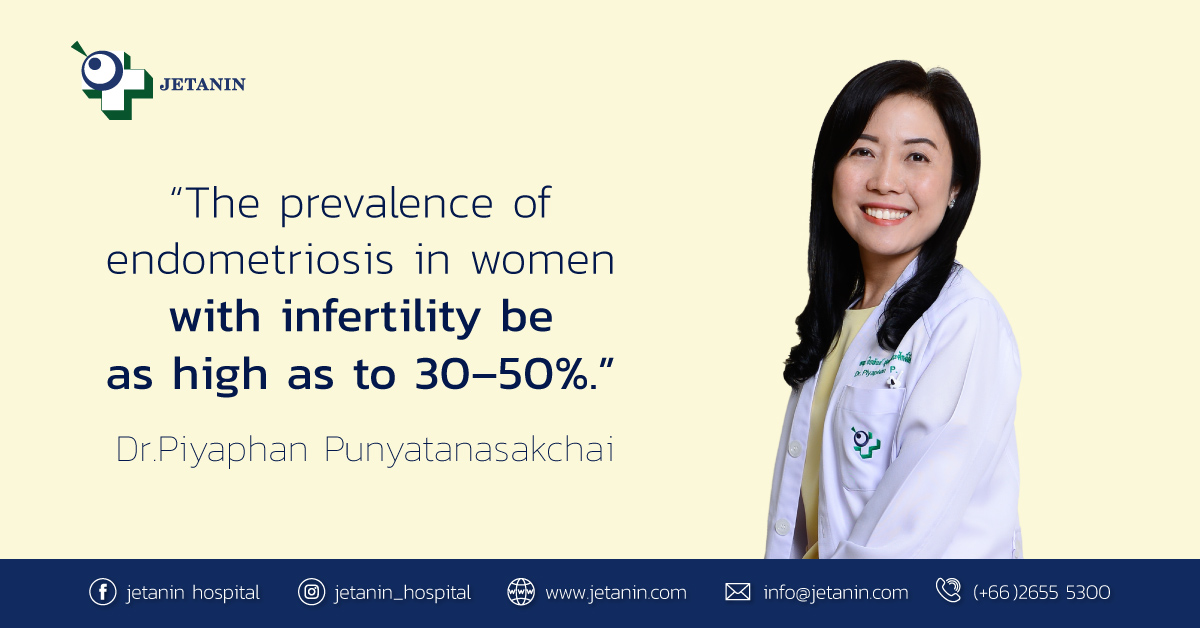
Endometriosis is a very common disease of the reproductive age that occurs in 6 to 10% of the general female opulation, and in 25 to 50% of women with infertility. Conversely, those who have been diagnosed with endometriosis are found to have problems with infertility as high as 30-50%. Accordingly, endometriosis is commonly associated with infertility.
The disease involves growth of tissue resembling the endometrium in places outside the uterus such as ovaries and pelvic lining, or into the muscular wall of the uterus, causing chocolate cysts, pelvic fibrosis and enlarged uterus, etc.
Common signs and symptoms:
– Asymptomatic, 20–25% of patients may not show noticeable symptoms;
– Pain, including menstrual pain, chronic pelvic pain, pelvic pain during sexual intercourse, defecation pain during menstruation;
– Infertility.
Infertility and endometriosis:
In normal couples, natural fecundity is in the range of 15 to 20% per month and decreases with age. However, women with endometriosis tend to have a lower monthly fecundity by approximately 2 to 10% per month. It is generally believed that there is an association between endometriosis and these followings:
1. Pelvic anatomy distortion
2. Disorders of uterine tube and ovulatory
3. Endometrial disorders
4. Impaired ovum These factors, therefore, cause women with endometriosis to be associated with infertility problems, too.
Treatment options:
The treatment for endometriosis patients is essentially depending on age, pain, fertility, and the severity of symptoms.
Medication : Generally, doctors may not recommend patients who want to become pregnant taking supplemental hormones. Although these medications are sometimes effective in reducing or eliminating the pain of endometriosis, they may decrease the ability to get pregnant during the time of treatment as these drugs can block the ovaries from functioning properly.
Surgery : On a case by case basis, depending on symptoms, surgical treatment may not be recommended to all patients. However, in most cases, such as in patients with severe pain, where laparoscopy therapy is required, and when endometrial lesions are found during surgery, it is recommended that such lesions be burned away or excised away. The surgical method is shown to improve a slight increase in natural pregnancy rates.
Ovulation induction (OI) with intra-uterine insemination (IUI), in-vitro fertilization (IVF) :
These treatments consistently demonstrate increased successful pregnancy, regardless of the severity of endometriosis symptoms. In the cases where the patients have chocolate cysts, it is not necessary to undergo surgery to cut away the cysts prior to the OI-IUI and IVF. This is exceptional for pain relief surgery or when the cyst position may obstruct the ovum, as cyst removal surgery can cause damage or death to the ovum and inability to induce ovulation after the surgery for in-vitro fertilization (IVF).
Written by
Dr.Piyaphan Punyatanasakchai
Obstetrician and Gynecologist, Reproductive Medicine
Jetanin Hospital
JETANIN Journal Vol.7 No.1
